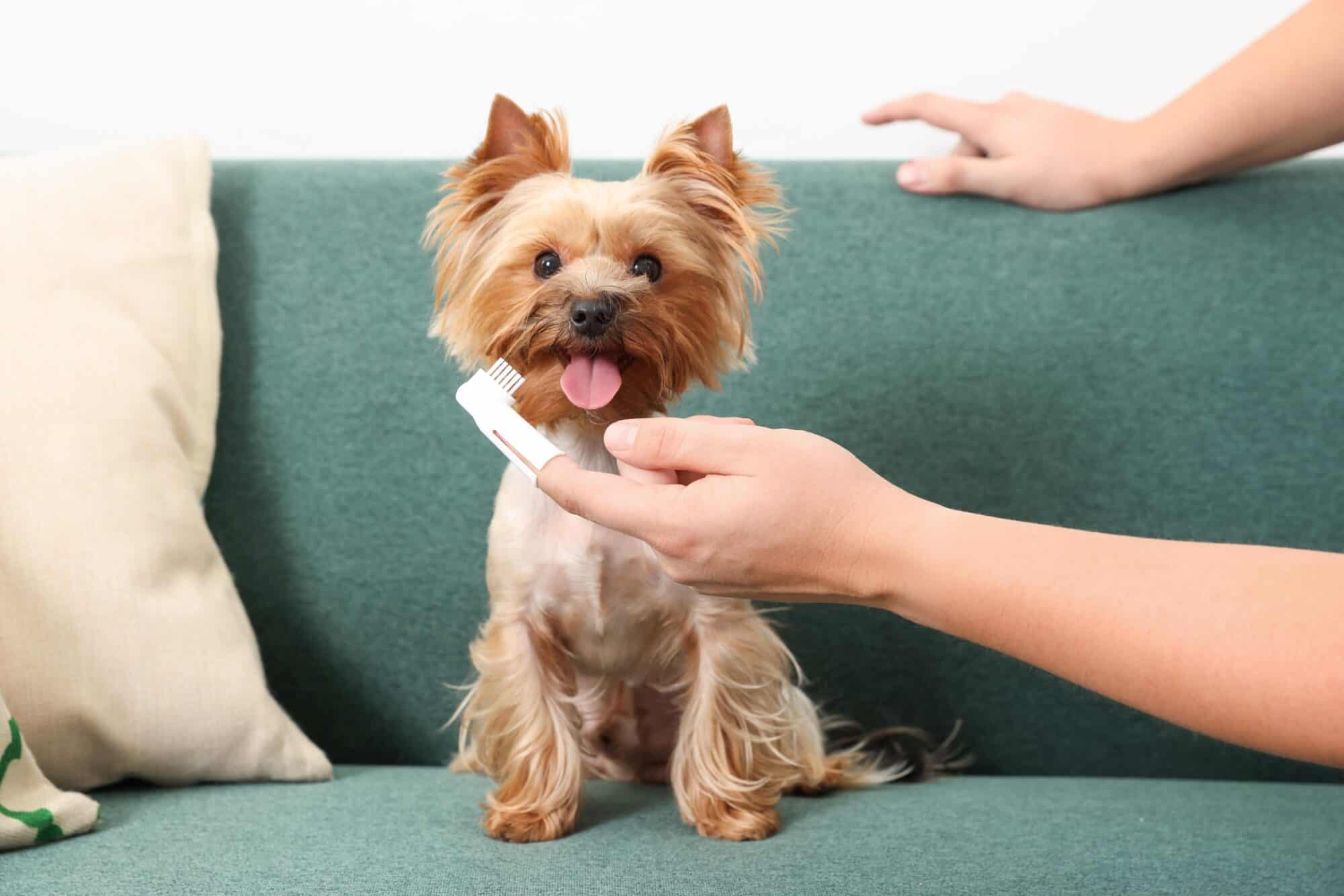Signs and Prevention: Tooth Decay in Dogs and Cats

The approach to a pet’s overall wellness is multifaceted. In addition to vaccinations, parasite prevention, nutrition, and behavioral support, a pet’s dental care is a high priority. Without an annual professional cleaning or routine brushing at home, tooth decay in dogs and cats is a very real possibility. Since the majority of adult and senior pets have some form of dental disease, taking extra care of the teeth and gums is an important part of preventive veterinary care.
Periodontal Disease in Pets
Periodontal disease is characterized by inflammation and infection of the gums, the supportive tissues around the teeth. When bacteria enters the mouth, it forms a plaque on the surface of the teeth. Over time, the plaque calcifies into tartar. Typically, tartar builds up on the gumline, exposing the gum to infection and inflammation (a condition referred to as gingivitis).
Noticing Bad Breath
An obvious sign that a pet has the first stage of periodontal disease is, of course, bad breath. Worse than the universal “doggie breath” or “kitty mouth,” halitosis is a symptom of declining oral health. Left alone, halitosis only gets worse with time.
Periodontal disease is preventable, but if it develops beyond this first stage, it can only be managed. Periodontal disease can affect the health of the liver, heart, and kidneys, and must be treated to preserve a pet’s optimal wellness. Other signs of gum problems and tooth decay in dogs and cats include:
- Loose teeth
- Broken teeth
- Yellow, brown, or otherwise discolored teeth
- Drooling
- Food avoidance
- Dropping food
- Chewing on one side
- Increased vocalization
- Showing signs of pain when touched around the mouth
- Bleeding gums
- Swelling
- Social changes, such as hiding or withdrawing
Exams, Cleanings, and X-Rays
At each routine wellness exam, we look inside a pet’s mouth for any evidence of inflamed, red, bleeding or swollen gums, and brownish-yellowed molars. Since the full extent of periodontal disease occurs beneath the gum line, a full-scale examination under general anesthesia may be the next step.
While safely anesthetized and under complete monitoring:
- We conduct an examination of the mouth’s gum structures and teeth
- We take digital radiographs to reveal more about the teeth’s roots and provide additional data about how to proceed
- Scaling to remove any tartar and plaque buildup, and polishing adds a layer of protection and vitality to the teeth’s appearance
Part of a Day’s Work
Brushing a pet’s teeth is critical to their health. Younger pets may be more open to the experience, but pets of any age can be convinced to accept teeth brushing (through praise, affection, grooming, and let’s face it, snacks). We can help you with proper techniques, and recommend a prescription diet, dental treats, and even water additives to strengthen your proactive approach to pet dental care.
If you have questions about your pet’s teeth and gums, please give us a call at (616) 457‑9200. Our staff is always here to help you and your pet at Jenison Animal Hospital.
